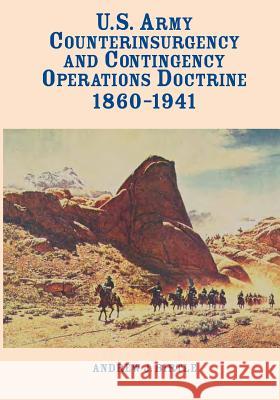U.S. Army Counterinsurgency and Contingency Operations Doctrine 1860-1941 » książka
U.S. Army Counterinsurgency and Contingency Operations Doctrine 1860-1941
ISBN-13: 9781508650713 / Angielski / Miękka / 2015 / 332 str.
U.S. Army Counterinsurgency and Contingency Operations Doctrine 1860-1941
ISBN-13: 9781508650713 / Angielski / Miękka / 2015 / 332 str.
(netto: 74,22 VAT: 5%)
Najniższa cena z 30 dni: 72,69 zł
ok. 13-18 dni roboczych
Dostawa przed świętami

Darmowa dostawa!
U.S. Army Counterinsurgency and Contingency Operations Doctrine, 1860-1941, is the first of a two-volume study on the U.S. Army's experience in "small war" situations and the development of low-intensity conflict doctrine. Focusing on the suppression of insurgent or other irregular forces during overseas constabulary and contingency operations from the Civil War years up to America's entry into World War II, Andrew J. Birtle has filled an important omission in military historiography by writing about the underlying theories, concepts, and methods employed in the conduct of myriad unconventional missions with soldiers serving as governors, constables, judges, diplomats, explorers, colonizers, educators, administrators, and engineers. Even though official, codified, written doctrine for counterguerrilla, pacification, and nation-building activities prior to World War II has long been viewed as nonexistent, Birtle uncovers through his meticulous research an evidentiary thread of continuity in the Army's performance and thus maintains that some of the central principles governing such operations were indeed incorporated into official Army doctrinal literature. The events discussed unquestionably occurred long ago, but many of the issues raised by Birtle have enduring relevance for today's Army. People, places, and events may change, yet the fundamental questions involved in suppressing insurrections, fighting irregulars, administering civilian populations, and conducting foreign intervention remain surprisingly constant in this unpredictable world of ethnic tensions and turmoil. By studying how soldiers dealt with these complex issues in the past, Birtle's well-written account offers valuable insights to guide current and future soldiers when called upon to conduct similar operations.











